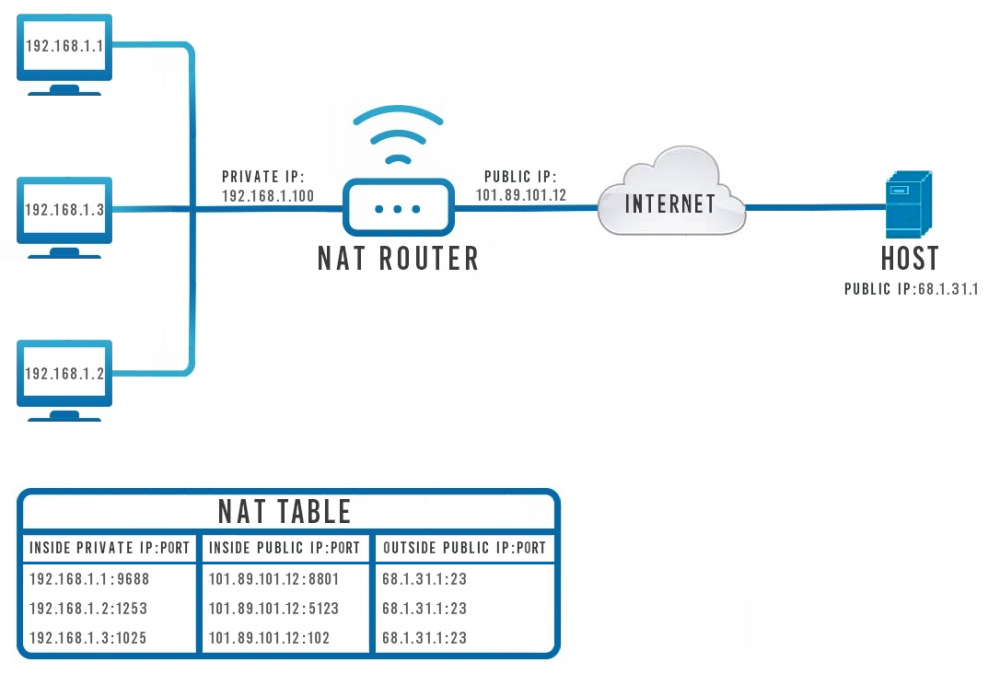Difference between revisions of "Network Address Translation"
| Line 9: | Line 9: | ||
==How NAT works== | ==How NAT works== | ||
| + | NAT works by applying '''IP masquerading''', which is a technique that hides an entire IP address space, usually consisting of private IP addresses, behind a single IP address in another, usually public address space. The address that has to be hidden is changed into a single (public) IP address as "new" source address of the outgoing IP packet so it appears as originating not from the hidden host but from the routing device itself: | ||
| − | [[File:Private public ip 3 v2.png]] | + | [[File:Private public ip 3 v2.png|1000px]] |
The scheme above roughly describes how devices with private IP addresses communicate with a remote host on the Internet (and ''vice versa'') with the help of NAT. Bellow the scheme is a depiction of a NAT mapping table. It illustrates how the router differentiates to which device in the local network to redirect incoming data packets. | The scheme above roughly describes how devices with private IP addresses communicate with a remote host on the Internet (and ''vice versa'') with the help of NAT. Bellow the scheme is a depiction of a NAT mapping table. It illustrates how the router differentiates to which device in the local network to redirect incoming data packets. | ||
Revision as of 15:51, 12 January 2018
Main Page > FAQ > Networking > Network Address TranslationNetwork address translation (NAT) is a method of remapping one IP address space into another by modifying network address information in IP header of packets while they are in transit across a traffic routing device. Or to put it in plain terms, NAT allows devices with private IP addresses to communicate with hosts via the internet using IP masquerading.
Why do we need NAT?
When the Internet was in its infancy and before IP addresses were first created, responsible engineers had to decide how long an IP address should be. Since data is exchanged through the Internet via data packets and every data packet has to contain the sender's and receiver's IP addresses, the length of an IP address would determine how large packets would be. A short IP address would mean smaller data packets but fewer possible IP addresses and vice versa.
32-bit length IP addresses were chosen and this is what we call IPv4 today. A 32-bit length means that there can be 232 or 4,294,967,296 distinct IP addresses which is nearly not enough to meet the demand of today's internet savvy society - with over 7 billion people in the world and countless more devices there is just no way that only 4.2 billion unique address would suffice. NAT solves this problem by remapping one IP address space into another by modifying network address information in IP header of packets. This way several devices can use one Public IP address to send and receive packets through the Internet.
How NAT works
NAT works by applying IP masquerading, which is a technique that hides an entire IP address space, usually consisting of private IP addresses, behind a single IP address in another, usually public address space. The address that has to be hidden is changed into a single (public) IP address as "new" source address of the outgoing IP packet so it appears as originating not from the hidden host but from the routing device itself:
The scheme above roughly describes how devices with private IP addresses communicate with a remote host on the Internet (and vice versa) with the help of NAT. Bellow the scheme is a depiction of a NAT mapping table. It illustrates how the router differentiates to which device in the local network to redirect incoming data packets.
